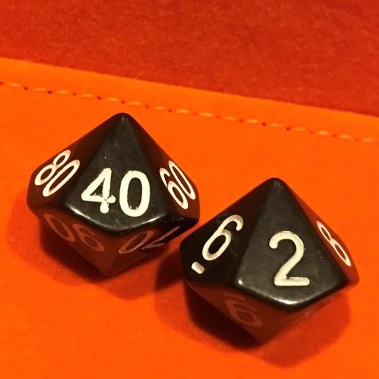 Mention wargaming and most people will have preconceived idea of what is involved. Whether they just can’t see the value or are entertained by the notion of adults playing games at work (particularly with polyhedral dice), it’s very rare to meet someone who accepts the idea at face value. And the reasons why are all about preconceptions.
Mention wargaming and most people will have preconceived idea of what is involved. Whether they just can’t see the value or are entertained by the notion of adults playing games at work (particularly with polyhedral dice), it’s very rare to meet someone who accepts the idea at face value. And the reasons why are all about preconceptions.
The preconceptions of Wargaming
Within the armed forces wargaming is generally embraced for a range of purposes, but on an individual level, not so much. Our experience at Evocatus has shown us that this is largely based on fear, whether in the conscious or subconscious mind. This could be:
• the fear of being publicly and unequivocally turned over in an adversarial setting.
• the fear of being seen to be too interested in an activity stereotypically enjoyed by men who are everything an army officer strives not to be.
• the fear of being beaten in a game of tactics.
As a result, many would rather mock wargaming as the preserve of the seriously uncool; much more socially acceptable to make a name for oneself on the Rugby pitch. Some of this analysis might translate to business; certainly managers’ discomfort with being shown to be wrong, to have made poor decisions or having failed to anticipate, could be behind excuses not to wargame
Outside of defence the challenge is much more about the name and the baggage it brings. The range of activity we describe as wargaming is relevant across a range of settings, not just in the study and preparation for waging war. Combine this with a genuine and well-intentioned belief that playing games is for children, and there are plenty of reasons and excuses to reject wargaming as something for other people. Somehow, it’s up to those of us who get excited about professional wargaming to get past those assumptions and preconceptions and convince organisations and decision makers of the potential benefits to be gained.
Communicating the benefits of wargaming
To communicate those benefits, it is crucial to understand them and to be able to explain them. At their heart, wargames are models of a situation in which players make decisions in an effort to reach an objective. These models can be simple, abstracted and portable, or fiendishly complex, realistic and require significant infrastructure to run, or anywhere in between. But they must have an element of modelled competition or antagonism and include an element of uncertainty. Without this, it’s probably a BOPSAT. “A Bunch Of People Sat round A Table” can be useful, but it’s not a wargame, despite being occasionally mislabelled.
What differentiates wargames and makes them interesting and useful is that they are simulations, in which outcomes can diverge from expectations. They are all about developing strategies, challenging linear thinking and testing assumptions and bias.
 We’ve used them to educate, training minds to expect plans to come unhinged, and to anticipate how an opponent, a competitor, or an ally, might act.
We’ve used them to educate, training minds to expect plans to come unhinged, and to anticipate how an opponent, a competitor, or an ally, might act.

We’ve used them to build consent for change, by putting an audience in the shoes of their stakeholders and letting them feel their frustration and see a wider slice of the big picture.

We’ve used them to help understand what the impact of a decision might be, to test the detail of contingency plans and share ownership for them.
What all of these games had in common was that they focussed on accepting complexity and rejecting the ordered simplification which our psychology loves to impose on any given situation.
The power of the Red Team
There is a huge range of reasons for organisations to run wargames, but the magic ingredient in every wargaming experience is red teaming. The Red Team, whose job is to think from a different perspective and provide the friction required to find the flaws in the Blue plan. In traditional military wargaming, Red and Blue are antagonists, opponents for whom winning means their enemy losing. Decision making in the real world is evidently more complex, with a wider range of actors and audiences, all of whom will have a bearing on the situation, some of which can be incorporated into a wargame. It is this Red (or rather non-Blue) Team quality which makes wargaming such a powerful tool. It is an antidote to over-confidence, to optimism bias, groupthink and confirmation bias; it builds resilience and agility through practicing the need to re-plan and re-think on the move, rather than giving up or holding onto a plan that simply won’t work. That said, a wargame is not the answer to every problem. It is just a set of tools, not a panacea.
The benefits of practicing strategic thinking in complex situations seems self-evident, and a steady stream of pieces from the big consultancy firms highlighting the positive impact of wargaming on corporate resilience and risk management through the uncertainties of 2020 suggest that really big business is now increasingly using wargames to good effect. So why is it still such a struggle to convince managers that they should consider running wargames as part of their business activity?
What’s in a word?
The name is certainly problematic; a direct translation from the Prussians’ KriegSpiel and set against the context of hobby wargaming with its preponderance of Dark Elves and Space Marines, a wargame hardly sounds like a useful tool for 21st Century businesses. A few have tried to promote alternatives; Rex Brynen’s PaxSims blog is a great wargaming resource which nods to the idea that the tools can be used in contexts beyond warfare. In an ideal world, there would be a neat Japanese word, along similar lines to Kaizen, which could be used as a shorthand for the range of adversarial simulations we currently label as wargames. In the meantime, writing and speaking to explain what we do and redefining what most understand by the word “wargaming” helps to get the word out there.
The second problem is yet more military baggage, largely in the name, again. While businesses may admire the army’s ability to mobilise and organise people and resources rapidly, at scale and with minute attention to detail, there seems to still be a belief that this is achieved through “ways that won’t work for us”, with lots of shouting by a small number of aggressive men and a lot of hard work and running around by the majority. While this has a lot more to do with media portrayals than any first-hand experience, it is a pervasive view. Wargaming might work well for these military cartoon characters planning their operations, but how on earth can it be applied to how Smith and Jones PLC are going to sell Financial Services or test the Business Continuity Plan? Again, the only way to unpick this preconception is through explanation and communication. One of our finest wargames was a consent-building exercise in a scenario concerned with ethical sales and distribution of infant formula and it was so successful we were asked to deliver it again for the same client on 3 continents; wargaming is not just for warriors!
Too difficult to implement?
As with many “innovative” business solutions, there is often a perception that wargaming is something of a dark art, only to be practiced by an anointed few and within strict rules and limitations. Well, it’s really not. Yes, there are some real Master Craftsmen (so far, the vast majority are men, but that’s changing) out there with decades of expertise, but most businesses don’t need an exquisitely crafted masterpiece; they need an exercise and a set of tools to help them learn, think or plan in a scenario in which outcomes can diverge from expectations, based on decisions and even chance. A relatively “quick and dirty” solution is often the most efficient one and certainly doesn’t need to come at the prices charged by the big consultancy firms!
Red Teaming is gaining traction in the business world; a Venn Diagram would show a very significant overlap with wargaming, particularly in broad approaches and ways of thinking. Some established credibility outside defence, perhaps out of successful application in cyber security, and a relative lack of baggage mean that Red Teaming is well ahead of wargaming in becoming part of normal life in the business world; perhaps we should be using it as a crowbar to break in or should just accept that it’s a better shorthand for activity to overcome linear thinking.
A tool for ‘lifting your gaze’
However, all of this is really just semantics. Those of us who design and run professional wargames for a living are not that excited about what name gets used. What gets us really excited is seeing people who are playing a game start to think in ways that account for what an opponent might do, start to really weigh risk against reward and really understand the detail of their contingency plans. What we work with is just a set of tools; we can use them to educate, to explain, to explore and to assure, but the name really shouldn’t matter. The real challenge is persuading hard-pressed decision-makers to lift their gaze from the daily battles they are fighting and to start thinking about how best to prepare for whatever is coming over the horizon next. It’s once their attention is there that we can introduce them to our offering; but probably best not to call it wargaming, until we need a shorthand.
